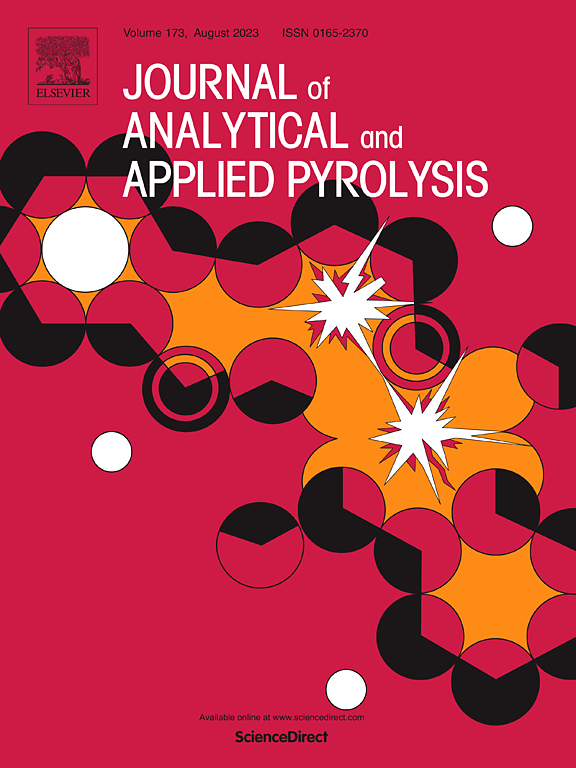Sustainable approach of modified biochar based adsorbents towards enhanced phosphorus removal from wastewater
IF 5.8
2区 化学
Q1 CHEMISTRY, ANALYTICAL
引用次数: 0
Abstract
Increasing dependence on non-renewable phosphate rocks has led towards search for new alternative methodologies for recovering it from waste reserves. Natural adsorbents from carbonaceous-rich biochar have gained attention for nutrient recovery and utilization due to their distinctive surface properties and reusability. However, often native biochar lacks appropriate functional groups or porous properties for efficient phosphorus adsorption which emphasizes the need to revisit research field to identify lacunae. Thus, an initial systematic scientometric analysis was conducted to evaluate research gaps, recent advancements, and hot spots associated with biochar-based phosphorus (P) adsorption. Boolean logic model was utilized to retrieve 1694 documents for the period 2011–2023 from web-of-science database. A rapid surge in publications was evident from 2017 onwards. China (61.7 %), USA (15.76 %), South Korea (5.88%), Australia (5.0 %), and India (4.82 %) are the top countries contributing to research domain. Major research hotspots were found to be different activation strategies for performance enhancement, interpretation of complex mechanisms using analytical techniques, and real-time end applications in water and soil. The present review also comprehensively summarizes the effects of biochar production/ modification and adsorption parameters on the P-adsorption efficiency. The underlying mechanisms include ligand/ion exchange, electrostatic interaction, surface precipitation, surface complexation. P-adsorption using biochar mostly follows Langmuir isotherm model suggesting the monolayer chemical process. Assessment of optimization parameters on adsorption process, and underlying environmental and economic impacts of biochar-based adsorbents need to be focussed. Overall, comprehensive summary delineates practicality of scaling-up biochar-based P-adsorption processes to achieve sustainable development goals (SDGs) combined with circular bio-economy perspectives.
对不可再生磷酸盐岩的依赖与日俱增,促使人们寻找新的替代方法,从废物储备中回收磷酸盐。富含碳质的生物炭天然吸附剂因其独特的表面特性和可重复使用性,在养分回收和利用方面备受关注。然而,本地生物炭往往缺乏适当的功能基团或多孔特性,无法有效吸附磷,这就需要重新审视研究领域,找出空白点。因此,我们进行了初步的系统科学计量分析,以评估与生物炭基磷吸附相关的研究空白、最新进展和热点。利用布尔逻辑模型从科学网数据库中检索了 2011-2023 年间的 1694 篇文献。从 2017 年开始,论文数量迅速激增。中国(61.7%)、美国(15.76%)、韩国(5.88%)、澳大利亚(5.0%)和印度(4.82%)是对研究领域贡献最大的国家。研究发现,主要的研究热点是提高性能的不同活化策略、利用分析技术解释复杂机制以及水和土壤中的实时终端应用。本综述还全面总结了生物炭生产/改性和吸附参数对 P 吸附效率的影响。其基本机制包括配体/离子交换、静电作用、表面沉淀、表面络合。生物炭对 P 的吸附大多遵循 Langmuir 等温线模型,表明是单层化学过程。需要重点评估吸附过程的优化参数,以及生物炭吸附剂对环境和经济的潜在影响。总之,全面总结描述了扩大基于生物炭的 P 吸附过程的实用性,以实现可持续发展目标(SDGs)和循环生物经济观点。
本文章由计算机程序翻译,如有差异,请以英文原文为准。
求助全文
约1分钟内获得全文
求助全文
来源期刊
CiteScore
9.10
自引率
11.70%
发文量
340
审稿时长
44 days
期刊介绍:
The Journal of Analytical and Applied Pyrolysis (JAAP) is devoted to the publication of papers dealing with innovative applications of pyrolysis processes, the characterization of products related to pyrolysis reactions, and investigations of reaction mechanism. To be considered by JAAP, a manuscript should present significant progress in these topics. The novelty must be satisfactorily argued in the cover letter. A manuscript with a cover letter to the editor not addressing the novelty is likely to be rejected without review.

 求助内容:
求助内容: 应助结果提醒方式:
应助结果提醒方式:


